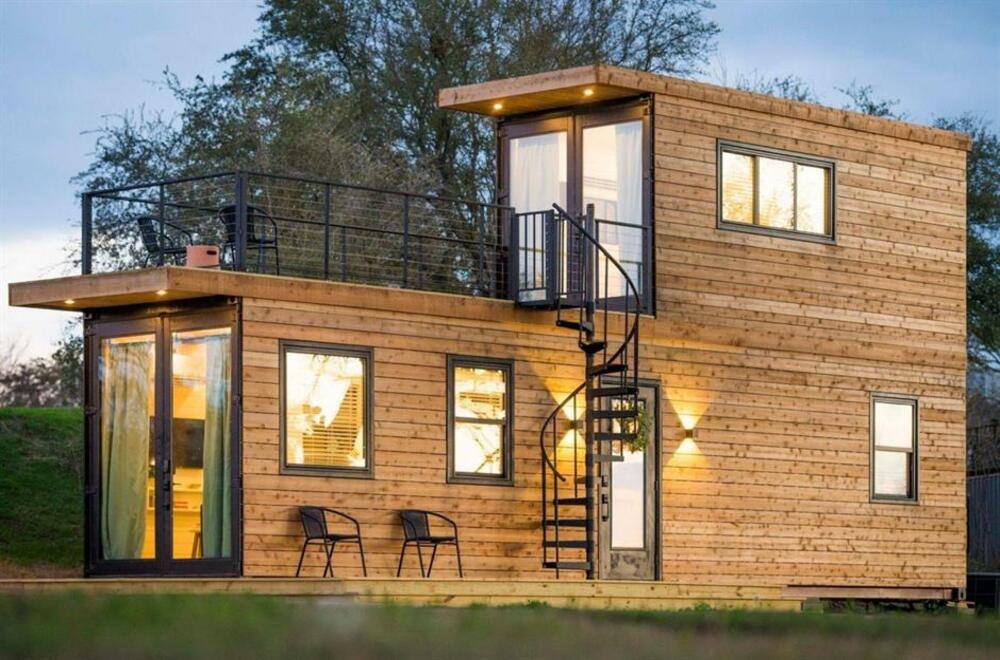Picture a scenario when you live in a durable, wholesome shipping container home with your family. It’s a fulfilling life – until after some years, you realize you must expand container homes since your family also expands and your personal belongings keep adding up.
Thankfully, since container homes are extremely modular, we can expand them more easily than conventional homes. There’s no need to procure materials like cement in bulk – some shipping containers from trusted vendors like Tradecorp and additional resources are enough to expand container homes.
What to Do Before You Expand Container Homes
Before getting into the container home expansion for real, do the following steps beforehand. These factors guarantee that your expansion works well in terms of space, comfort, and sustainability alongside looking flawless.
Check The Structural Soundness
Although shipping containers are designed to be strong, their strength may be diminished if they are altered to allow for doors and windows. Verify if the current structure can support an expansion. Reinforcing your property to guarantee its lifespan and safety could be essential.
Review Your Area’s Zoning And Building Codes
Ignoring some of the rigorous regulations that some regions have on container house renovations could result in penalties or even legal problems in the future. You can avoid headaches later on by seeking advice from a local architect or contractor experienced with container homes.
Consider Your Spending Plan
You still need careful financial planning even when it seems more affordable to expand a container home rather than build a typical home. Establish your budget and base your design decisions accordingly. You should also be reasonable when planning labor, materials, and other features like electrical and plumbing work.
Best Ways to Expand Container Homes
After all pre-expansion matters are finished, go forward with your project to expand container homes by following these recommendations.
Designing an Open Home Concept
Creating an open-concept layout is one of the easiest ways to make a container home feel larger. Embrace the openness in your living spaces instead of using excessive walls to divide them into separate areas. Open living rooms allow for easier circulation and offer a sense of a bigger home.
For example, you can combine the living room, dining room, and kitchen into one big area. Rather than building walls, use furniture to define spaces, such as bookshelves or plants. This method gives you more choice in how you arrange your rooms in addition to saving space.
Ensure every new section of your expansion fits the others when planning the project. You can do it by eliminating visual clutter and adhering to a consistent design concept.
Stacking Containers Vertically
If you have limited land, consider thinking about constructing upward rather than outward. It’s a great idea to stack containers vertically to maximize space without adding to your yard’s area. A container home with two or three stories can significantly expand your living area while taking up little room.
Install ladders or stairs to link the levels. But stay away from big, space-consuming staircases in favor of metal ladders or spiral steps, which take up less space and offer simple access to higher levels.
Each level can serve a different purpose. You may have your living and dining area on the first story and bedrooms or perhaps a rooftop terrace on the upper stories. This vertical expansion strategy makes the most of the available space while giving your house a distinctive, contemporary look.
Adding Extensions to the Sides
Extending the home’s edges is another practical way to expand container homes. You can do it by creating bespoke extensions or chopping away portions of the sidewalls of the container and adding new ones.
You may add a new bedroom or expand your kitchen, for instance. Alternatively, a sunroom or patio outside can be perfectly incorporated into the current building. The basic style of the container is preserved while more useful spaces are created by pushing the walls outward.
Just be sure that any additions mesh harmoniously with the existing design. The new sections should not look out of place; instead, they should have a unified design that blends in with the overall style of your house.
Utilizing Outdoor Living Spaces
Making greater use of outside spaces is one often-overlooked way to expand container homes. You can greatly expand your home’s living spaces by adding a deck, patio, or rooftop garden in the home’s exteriors. You don’t need to add more rooms to extend your living space by designing useful outdoor areas.
Add fire pits, outdoor kitchens, or even furnishings outside. These spaces are ideal for hosting guests or just lounging outside on a peaceful evening. Large glass doors or floor-to-ceiling windows that open into these outside spaces will also improve the connection between the internal and outdoor rooms, giving the impression that your home is larger.
Installing Sliding or Foldable Furniture
A home’s perception of space depends greatly on its furniture. Choosing sliding or foldable furniture can help maximize the space in your expanded container home. When the furniture is unused, you can make space using Murphy beds, fold-out tables, or retractable kitchen islands.
You may also maintain your area tidy and clutter-free by utilizing built-in storage options like pull-out cabinets or benches with hidden compartments. By keeping the layout as adaptable as feasible, the objective is to maximize each room’s functionality.
Conclusion
Following the best practices to expand container homes above can make your container home expansion project feel less like a chore. Furthermore, using shipping containers like from Tradecorp to extend your home is a surefire way to make your home last longer. With our convertible 20’ and 40’ shipping containers, expand your homes by finding your preferred container from our various offerings.

